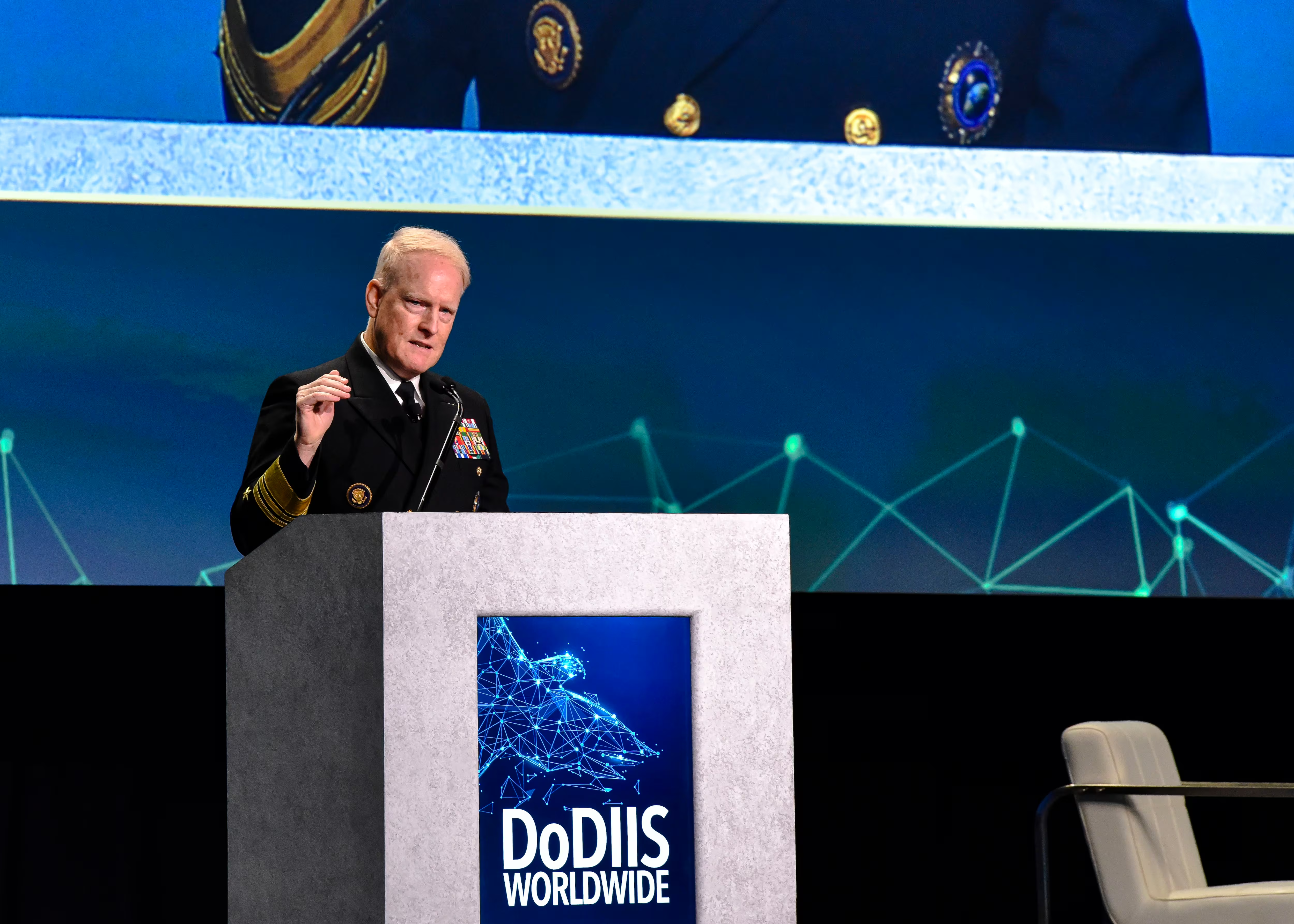The Air Force announced Sept. 18 it will officially create a new information warfare command.
While the project has been in the works for several months, Gen. James Holmes, commander of Air Combat Command, told reporters at the annual Air, Space, Cyber Conference that the decision has been finalized and Maj. Gen. Timothy Haugh has been tapped to lead the new organization, pending Senate confirmation.
Haugh was nominated for his third star Sept. 18 and was tapped to lead the new organization, which combines 24th Air Force or Air Forces Cyber and 25th Air Force. The latter is responsible for global intelligence, surveillance and reconnaissance.
Haugh, who took command of 25th Air Force less than three weeks ago, most recently led the Cyber National Mission Force at U.S. Cyber Command, which defends the nation against malicious cyberattacks abroad. He also co-led Cyber Command’s Russia Small Group, which helped thwart potential election interference in the 2018 mid-term elections.
“Tim brings unique experience to us as both an intel professional and then he’s been working for Gen. [Paul] Nakasone as one of his task force commanders in USCYBERCOM," Holmes said.
The new command will be known as 16th Air Force and provide cyber, electromagnetic spectrum operations, ISR and information operations to commanders. It will also have a director that oversees an operations center. It will activate upon Haugh’s confirmation.
In addition, Holmes said this combination will essentially revamp the offensive cyber teams the Air Force presents to U.S. Cyber Command.
“Cyber teams are dependent on intelligence, surveillance and reconnaissance,” Holmes said. “We think we can present more robust teams [to Cyber Command] with better intelligence support behind them and present some information ops options, which we have some game at already, but to improve that and be able to offer that to a larger scale.”
Air Force Cyber was already made up of personnel from 24th, who were the cyber personnel, and 25th, which provided the intel personnel, but Holmes indicated this integration will provide combatant commanders teams with a greater cyber capability.
The majority of these Air Force cyber teams support European Command, Transportation Command and Strategic Command, but a few teams work under the other services that support and conduct cyber operations in the other geographic commands.
Push to information warfare
Each of the services are pushing to better organize to provide a more robust information warfare capability that integrates cyber, electromagnetic spectrum, intelligence and information operations.
RELATED

Adversaries have been organizing under this integrated approach and don’t see conflict under the binary war or peace but on a continuum. For the Air Force, this integration helps the Air Force to develop options.
“We have talked extensively about our contested information or influence operations or hybrid warfare or gray zone operations that our adversary or competitors are actually conducting every day,” said Lt. Gen. VeraLinn Jamieson, the deputy chief of staff for intelligence, surveillance, reconnaissance and cyber effects operations. “We have to integrate ISR, cyber warfare, electronic warfare and information operations to actually identify and come up with what do we do, what do we need, how can we train and what tools are required for information warfare because out of all of the domains today, everyday around the globe, in cyberspace we are at conflict.”
Holmes echoed that sentiment, explaining that these capabilities help the Air Force. Moreover, he noted that the combined capabilities help attack more difficult targets such as air-gapped systems that aren’t connected to external networks.
“One of the challenges of cyber is how do you jump air gaps? We think about cyber as just being done on a keyboard and inside a network but how do you jump airgaps, how can you get into systems that are cut off,” he said. “There’s a great marriage there [in] capabilities that can be pulled together and if you bring all of those together under one ops center, then you’re able to coordinate it and make it all work in the same intent for the same objectives.”
Haugh said that one of the primary lessons being learned is that ISR can be used as an information operations tool to expose the enemy.
“How are we going to create multidomain dilemmas? To do that, you really have to really invest in the intelligence to be able to understand what will break the trust of the adversary,” he told Fifth Domain.
One example is Cyber Command’s posting of enemy malware discovered to a government site to not only expose and burn those tools, but help inform the private sector as a way to devise defenses.
Transferred to the intelligence realm, Haugh offered that the Air Force can attempt to expose adversary activity that has been observed through ISR platforms.
When asked how difficult this could be given the sensitivity of the target, such as a missile launch site, he said if they found a way to do it in the cyber realm regarding the VirusTotal releases, they can do it elsewhere.
“We found our way through that in cyberspace … Got great support from our interagency partners, great support from the intelligence community to make sure that we had good deconfliction processes. We should be able to work our way through it in other domains,” he said.
Mark Pomerleau is a reporter for C4ISRNET, covering information warfare and cyberspace.








